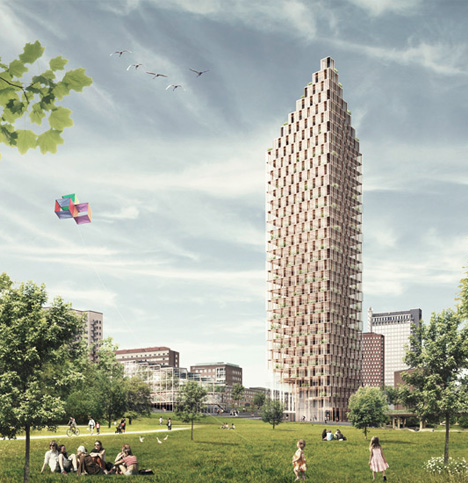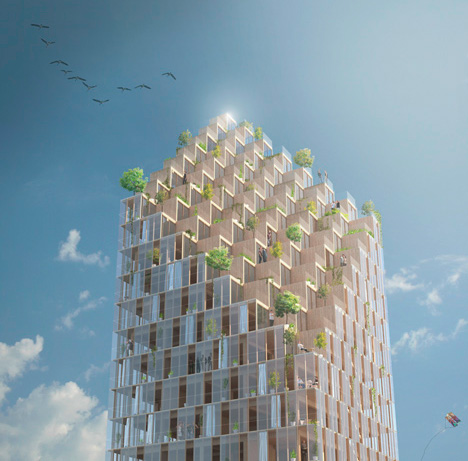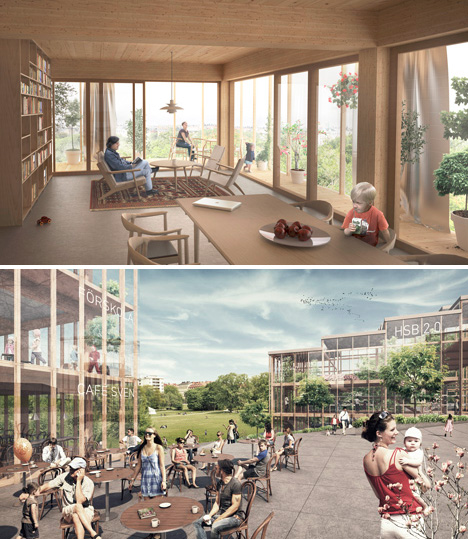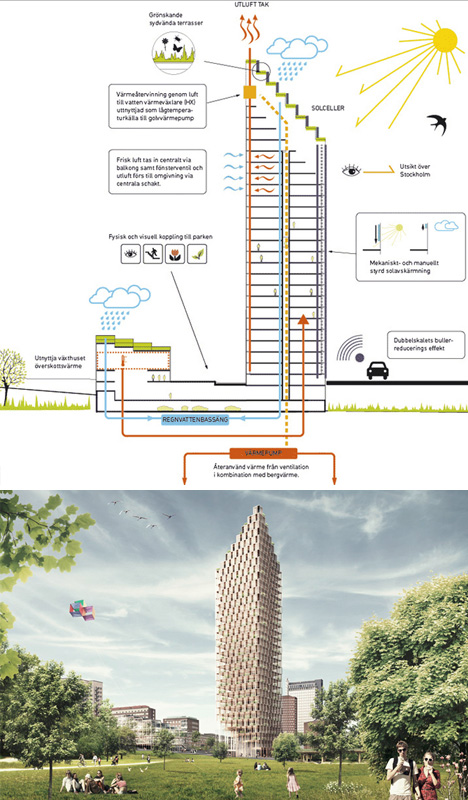If accepted and completed, this design would be the tallest wood-frame structure in the world. Counter-intuitive as it may seem, sustainable timber framing can be more eco-friendly than steel-and-concrete construction, which is also precisely the premise behind this competition entry that pitches wood as the primary building material.
C. F. Møller (in partnership with Dinell Johansson and Tyréns) notes that wood is renewable and lighter, thus costing less in both money and fuel to transport. Many non-architects also do not realize that wood can perform better than steel in a fire – steel heats up and buckles, while wood first loses its water weight, then chars and resists the flames.
Everything visible both inside and out celebrates the use of wood, from pillars and beams to ceilings, walls and window frames on each floor and in each unit. In turn, large exterior windows would also show off these wooden details to external viewers. At the building’s center, either wood or concrete could be used to form the service core. From the designers: “Wood is one of nature’s most innovative building materials: the production has no waste products and it binds CO2. Wood has low weight, but is a very strong load-bearing structure compared to its lightness.”
As a mixed-use development, “Social and environmental sustainability [are] integrated into the project. Each apartment will have an energy-saving, glass-covered veranda, while the building itself will be powered by solar panels on the roof. At street level there is a café and childcare facility. In a new community centre, local people will be able to enjoy the benefits of a market square, fitness centre and bicycle storage room. A communal winter garden will provide residents with an opportunity to have allotment gardens.”



